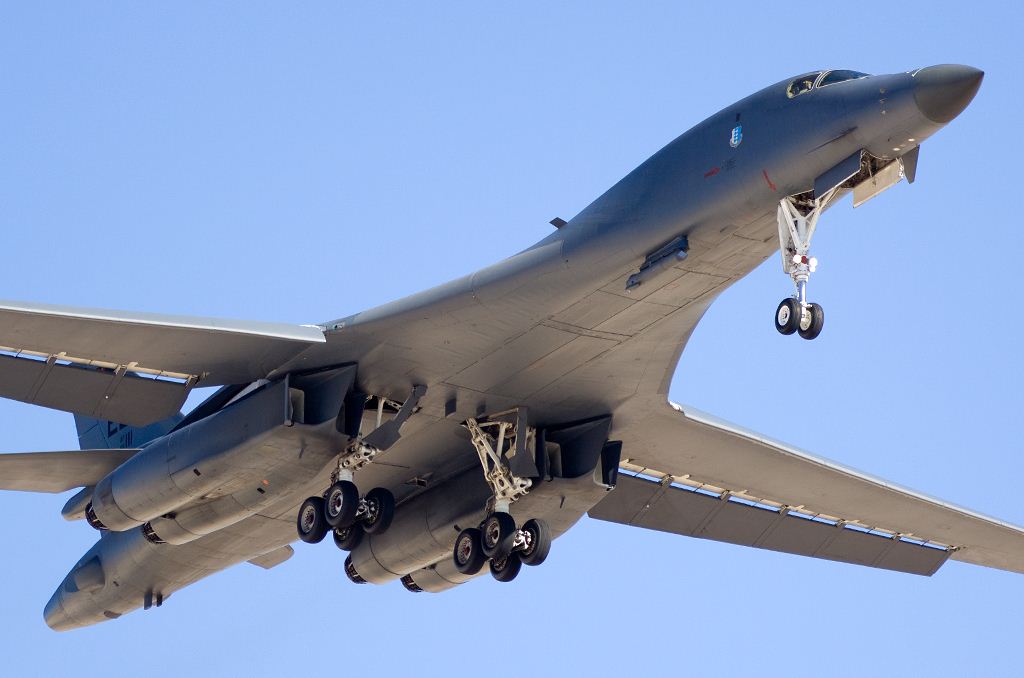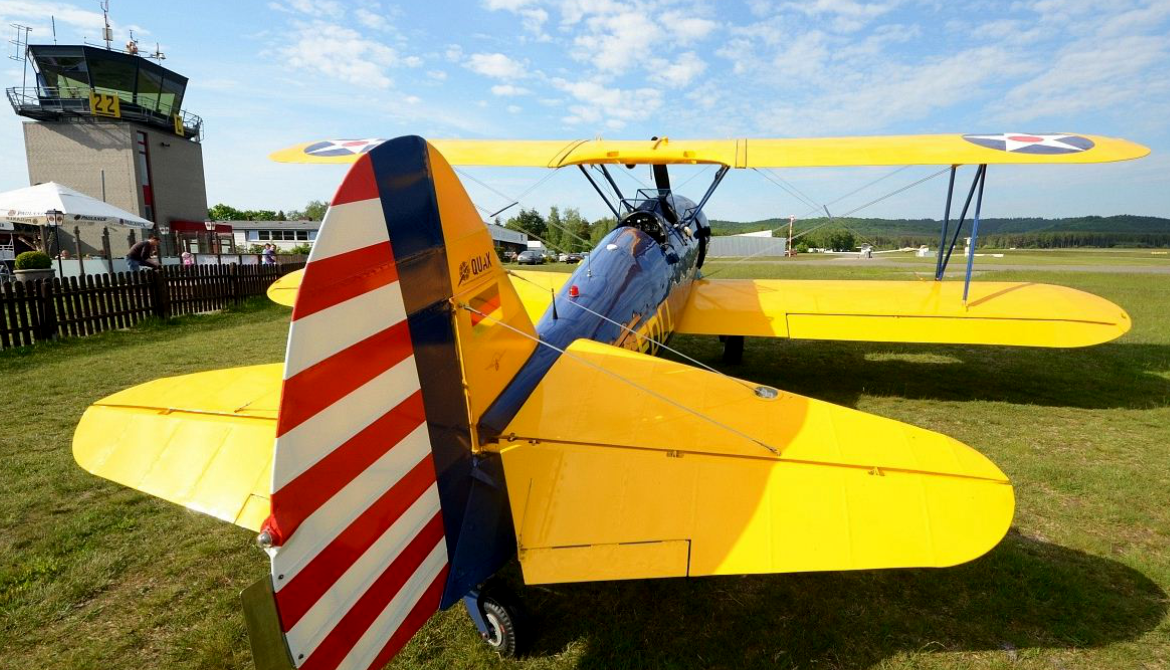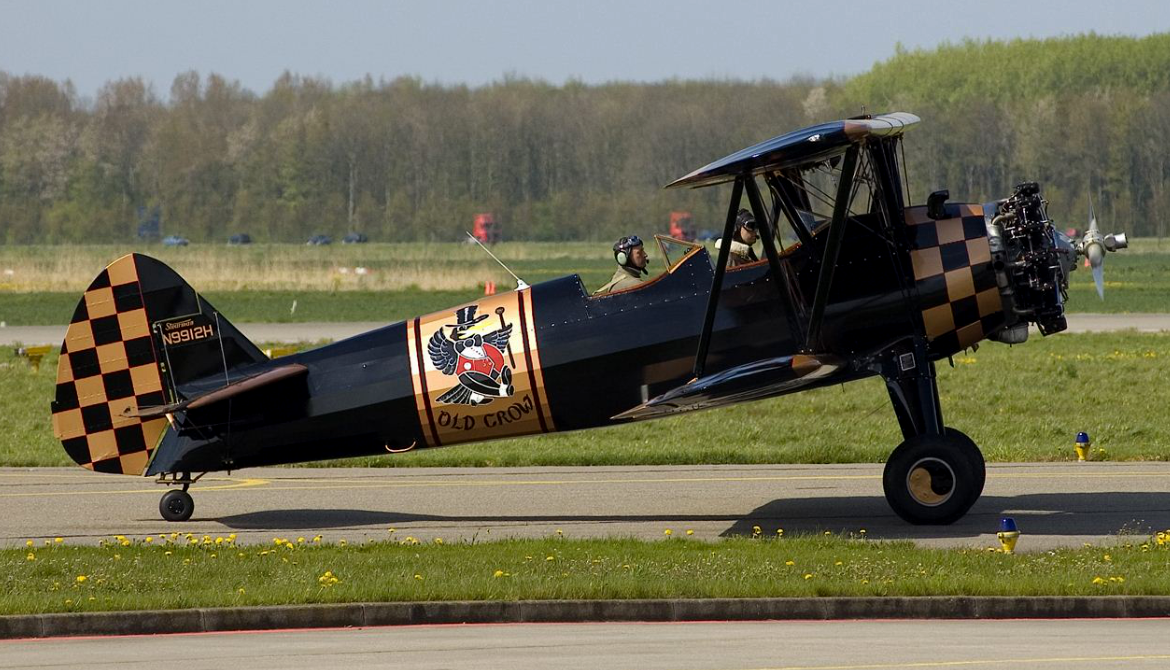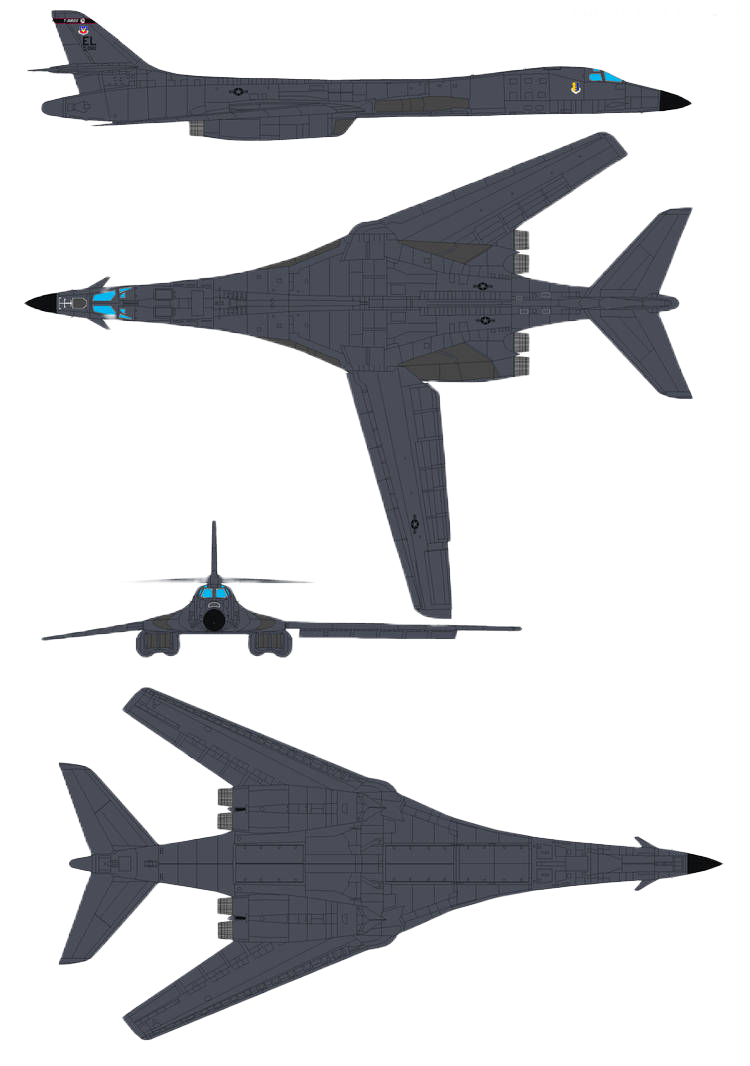Rockwell Aviation B-1B Lancer the "Bone"
Role Supersonic strategic heavy bomber
National origin United States
Manufacturer North American Rockwell/Rockwell International
First flight 23 December 1974; 48 years ago
Introduction 1 October 1986
Status In service
Primary user United States Air Force
Produced 1973–1974, 1983–1988
Number built 104
.
History Rockwell B-1B Lancer the "Bone"
The B-1 was first envisioned in the 1960s as a platform that would combine the Mach 2 speed of the B-58 Hustler with the range and payload of the B-52, and was meant to ultimately replace both bombers. After a long series of studies, Rockwell International (now part of Boeing) won the design contest for what emerged as the B-1A. This version had a top speed of Mach 2.2 at high altitude and the ability to fly for long distances at Mach 0.85 at very low altitudes. The combination of the high cost of the aircraft, the introduction of the AGM-86 cruise missile that flew the same basic speed and distance, and early work on the B-2 stealth bomber reduced the need for the B-1. The program was canceled in 1977, after the B-1A prototypes had been built.
In 1955, the USAF issued requirements for a new bomber combining the payload and range of the Boeing B-52 Stratofortress with the Mach 2 maximum speed of the Convair B-58 Hustler. In December 1957, the USAF selected North American Aviation's B-70 Valkyrie for this role, a six-engine bomber that could cruise at Mach 3 at high altitude (70,000 ft or 21,000 m). Soviet Union interceptor aircraft, the only effective anti-bomber weapon in the 1950s were already unable to intercept the high-flying Lockheed U-2; the Valkyrie would fly at similar altitudes, but much higher speeds, and was expected to fly right by the fighters0
ftTake off Distance
0
mCEILING
0
km/hAircraft Speed
0
Max Crew
Photo Gallery
Rockwell Aviation
B-1B Lancer the "Bone"


Rockwell Aviation B-1B Lancer the "Bone"
General characteristics
Crew: 4 (Aircraft Commander, Pilot, Offensive Systems Officer, and Defensive Systems Officer)
Length: 146 ft (45 m)
Wingspan: 137 ft (42 m)
Swept wingspan: 79 ft (24 m) swept
Height: 34 ft (10 m)
Powerplant
Empty weight: 192,000 lb (87,090 kg)
Gross weight: 326,000 lb (147,871 kg)
Max takeoff weight: 477,000 lb (216,364 kg)
Powerplant: 4 × General Electric F101-GE-102 afterburning turbofan engines, 17,390 lbf (77.4 kN) thrust each dry, 30,780 lbf (136.9 kN) with afterburner
Specifications
Maximum speed: 721 kn (830 mph, 1,335 km/h) at 40,000 ft (12,000 m), 608 kn (1,126 km/h) at (61–152 m)
Maximum speed: Mach 1.25
Range: 5,100 nmi (5,900 mi, 9,400 km) with weapon load of 37,000 lb (16,800
Max range is (12,000 km).
Combat range: 2,993 nmi (3,444 mi, 5,543 km)
Service ceiling: (18,000 m
Armament
Hardpoints:
6 external hardpoints for ordnance[c] with a capacity of 50,000 pounds (23,000 kg), with provisions to carry combinations of:
Bombs:
Mk-82 air inflatable retarder (AIR) general purpose (GP) bombs Mk-82 low drag general purpose (LDGP) bombs
And more read Wiki Link
Links to Youtube & Others
The North American Rockwell OV-10 Bronco is an American twin-turboprop light attack and observation aircraft.
Rockwell B-1B Lancer
On taking office, Reagan was faced with the same decision as Carter before: whether to continue with the B-1 for the short term, or to wait for the development of the B-2A Spirit.

Youtube Link
Presentación del Boeing Stearman de la Fundación Infante de Orleans. Realizado por Smoke On Video Productions












